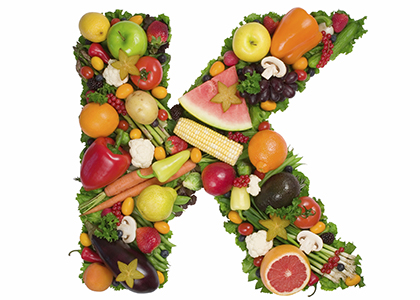 I’m sure you’ve heard the saying “Milk does a body good!” It was one of the most pervasive commercial messages of the 90’s in America. What that catch phrase drilled into our heads was that milk, and especially calcium were essential for healthy bones. The startling truth is, that is not necessarily the case. Studies have proven that high consumption of milk or dairy products, does not lead to a decrease in the incidence of bone fractures later in life, (Feskanich et al, 1997). Although calcium is one of the nutrients needed for our bones to stay healthy and strong, omega-3 fatty acids, minerals, vitamin D, and vitamin K are all essential to prevent osteoporosis.
I’m sure you’ve heard the saying “Milk does a body good!” It was one of the most pervasive commercial messages of the 90’s in America. What that catch phrase drilled into our heads was that milk, and especially calcium were essential for healthy bones. The startling truth is, that is not necessarily the case. Studies have proven that high consumption of milk or dairy products, does not lead to a decrease in the incidence of bone fractures later in life, (Feskanich et al, 1997). Although calcium is one of the nutrients needed for our bones to stay healthy and strong, omega-3 fatty acids, minerals, vitamin D, and vitamin K are all essential to prevent osteoporosis.
Vitamin K occurs naturally in two different forms: phylloquinone (vitamin K1) is the major type of dietary vitamin K which is found mostly in leafy green vegetables, while menaquinone-4 (vitamin K2) is the major form of vitamin K in the tissues, including bone and is synthesized by the bacteria in the gut, (Jun, 2014). “A number of foods also contain vitamin K2, notably natto (fermented soy beans), cheese, and curds, with natto being the richest source of vitamin K known,” (Jun, 2014). Vitamin K2 from fermented soybeans stimulates osteoblasts (cells that form and mineralize our bones) and inhibits osteoclasts (cells that break down the bone/ tissues) resulting in a strengthening effect on our bones, (Yamaguchi, 2006). When vitamin K status is low or impaired it also affects an important calcium-binding protein that is “strongly expressed in bone” and may be associated with how strong or fragile the bone remains, (Jun, 2014).
There is research that suggests that vitamin K is useful in the prevention of osteoporosis. One study that was testing the viability of using vitamin K as a marker to help diagnose osteoporosis found that, “vitamin K was significantly lower in women with osteoporosis (p/0.008) compared with women without it (p/0.015),” (Heiss, C et al, 2004). According to additional studies, Vitamin K2 appears to improve bone quality, which leads to a reduction in fractures; however, bone density may not always be affected in some studies, (Schwalfenberg, 2017). The lifetime risk of having at least one fracture is reduced by 25% with the daily use of 800 IU vitamin D, 45 𝜇gm vitamin K2, and 1200 mg calcium, (Gajic-Veljanoski et al, 2012). Another systematic review has shown vitamin K2 to prevent fractures in vertebra by 60%, hip fractures by 77%, and nonvertebral fractures by 81% in Japanese patients, (Cockayne et al, 2006).
Osteoporosis is not a condition that develops overnight. After puberty, our bones stop growing, and as we age we slowly begin to lose bone mass. For women this accelerates post menopause, (Lipski, 2018). Our diet plays a strong role in how rapid bone loss occurs. Smoking, being overweight, using corticosteroids, abusing alcohol, and eating that consists of high sugar, salt, saturated fat, low minerals, excess protein, and excess phosphorous (from soda, nuts, poultry, fish, eggs, cheese) all increase our risk for osteoporosis, (Brown, 2014). When it comes to our diet, osteoporosis becomes the price we pay for a body that is highly acidic and overburdened. Therefore in order to truly prevent osteoporosis, we must take a holistic approach; ensuring that the diet is mineral rich, we incorporate weight bearing exercises into our physical activity routines for strong bones, and monitor nutrients such as vitamin D, calcium and vitamin K.
References:
Brown, S. (2014, Apr. 22 ). How healthy are your bones? Bone testing — assessing bone breakdown and bone loss. Retrieved from http://www.betterbones.com/bonehealth/bonebreakdowntests.aspx
Cockayne, S., Adamson, J., and Lanham-New, S. (2006). “Vitamin K and the prevention of fractures: systematic review and meta-analysis of randomized controlled trials,” Archives of Internal Medicine, vol. 166, no. 12, pp. 1256–1261.
Feskanich, D., Willett, W. C., Stampfer, M. J., & Colditz, G. A. (1997). Milk, Dietary Calcium, and Bone Fractures in Women: A 12-Year Prospective Study. American Journal Of Public Health, 87(6), 992-997.
Gajic-Veljanoski, O., Bayoumi, A. M., Tomlinson, G., Khan, K., and Cheung, A. M. (2012). “Vitamin K supplementation for the primary prevention of osteoporotic fractures: is it cost-effective and is future research warranted?” Osteoporosis International, vol. 23, no. 11, pp. 2681–2692.
Heiss, C., Hoesel, L. M., Wehr, U., Keller, T., Horas, U., Meyer, C., & … Schnettler, R. (2004). Vitamin K in combination with other biochemical markers to diagnose osteoporosis. Biomarkers, 9(6), 479-488. doi:10.1080/13547500400026862
Jun, I. (2014). Vitamin K2 Therapy for Postmenopausal Osteoporosis. Nutrients, 6(5), 1971-1980. doi:10.3390/nu6051971
Lipski, L., PhD. Bone Health & Bone Loss. Retrieved from https://learn.muih.edu/courses/6181/pages/module-5-osteoporosis?module_item_id=164963
Schwalfenberg, G. K. (2017). Vitamins K1 and K2: The Emerging Group of Vitamins Required for Human Health. Journal Of Nutrition & Metabolism, 1-6. doi:10.1155/2017/6254836
Yamaguchi, M. (2006). “Regulatory mechanism of food factors in bone metabolism and prevention of osteoporosis,” Yakugaku Zasshi, vol. 126, no. 11, pp. 1117–1137.





